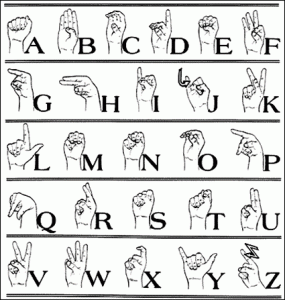American Sign Language is the most popular sign language in the United States and is also a part of West Africa, Canada, and Southeast Asia. ASL populated from French Sign Language, created around 1755. ASL was originated from American School for Deaf, which was established by Thomas Hopkins.
As more the schools for deaf were founded, ASL spread and helps in the development of organizations, for example, National Fraternal Society and National Association for Deaf, the language was started to be used all over the geographic area, something that is unusual for sign languages.

One of the important misconceptions is that the ASL is English, but is translated into signs. This is not true. ASL is a complicated natural language and should be treated as a different linguistic compound. ASL is also different from spoken languages.
What is meant by Signing a Language?
People not speaking a sign language assume that it is the matter of hand gestures. For example, if you want to tell someone about the house, you will make your hand’s position in the form of roof. The language includes many other words like ‘since’ or ‘if’, which can be described by particular gestures. There are many factors that affect the resulting meaning of the message explained via ASL.
The top most important factor is the position. If you just look on the hands and their movement, to will be surprised to look that there is almost a similar sign for man and woman. Seeing the signs thoroughly, you will note that male words position more towards forehead while female sign normally hovers around your chin.
Second, there is a direction towards your dominant will point to. These directions may be up or down, right or left, near or away from your body, they make different meanings.
Third, the facial expressions also play an important role to convey the message. If you want to ask a different type of questions, there will be different expressions the signers assume. For example, putting eyebrows together and raised. While asking yes/ no question, he will raise the eyebrows and tilt the head down a bit to accentuate his question. WH-type questions will express eyebrows together and tilt the head to a side.
Strategies to Learn ASL
As ASL is very interactive and visual, studying movement charts is not the best way to learn it, but a conversation with other people strategy is. Many aspects of the language can be communicated visually – if you have tried through written instruction, it will take a lot of time to come to the correct gestures.
While learning ASL, it is good to focus on a specific group of signs, fix them in your conversations and move them to another group of signs. Learning many signs at one time would be too critical in terms of spatio-visual language. Participate in sign conversation and closely follow them.
Learners of ASL should also look at the signers, their body language, facial expressions, and hand movements are all very important aspects of communication. After observing, you become able to tell either a person is asking some question or expressing his phrase. The approach proves the fact that ASL is having a variety of English.

